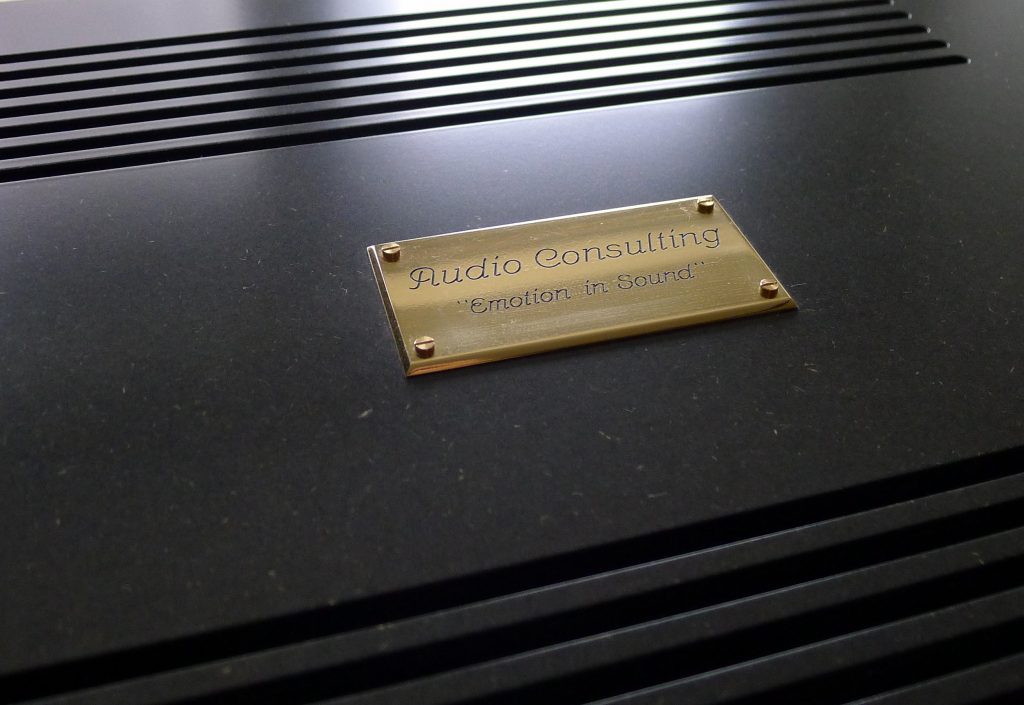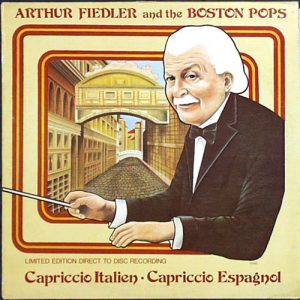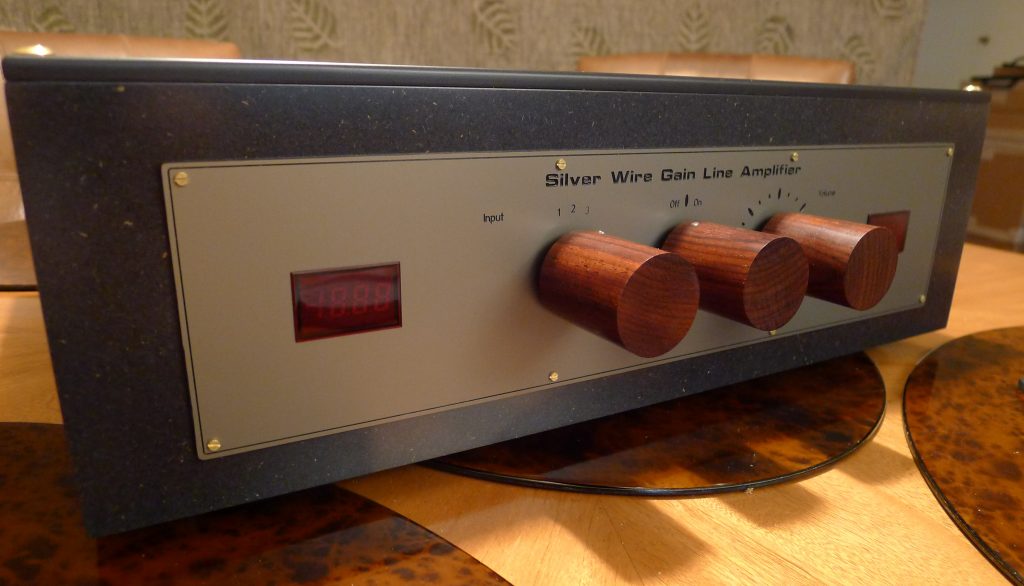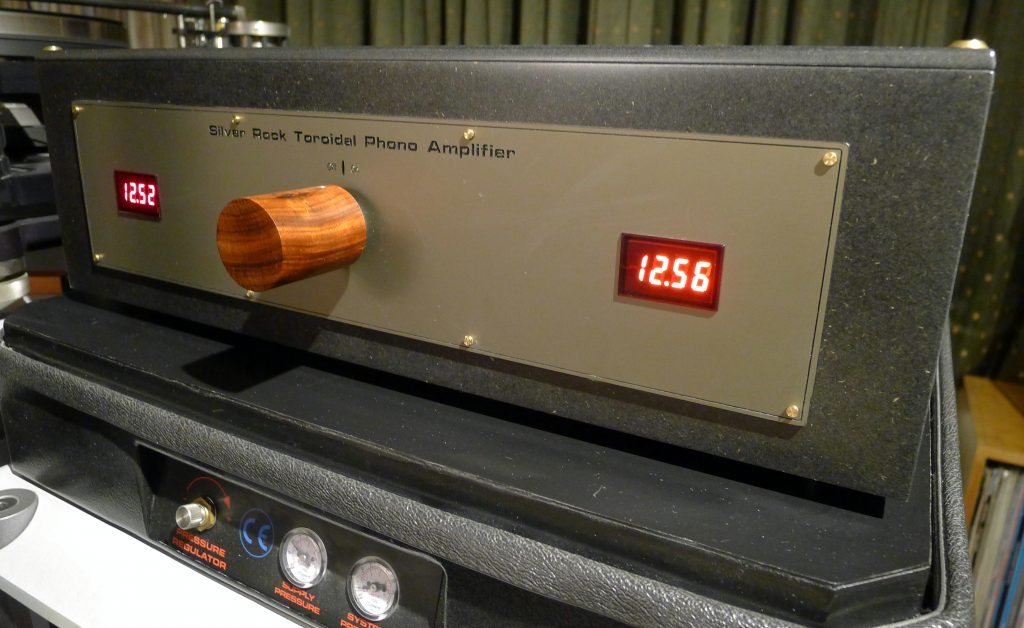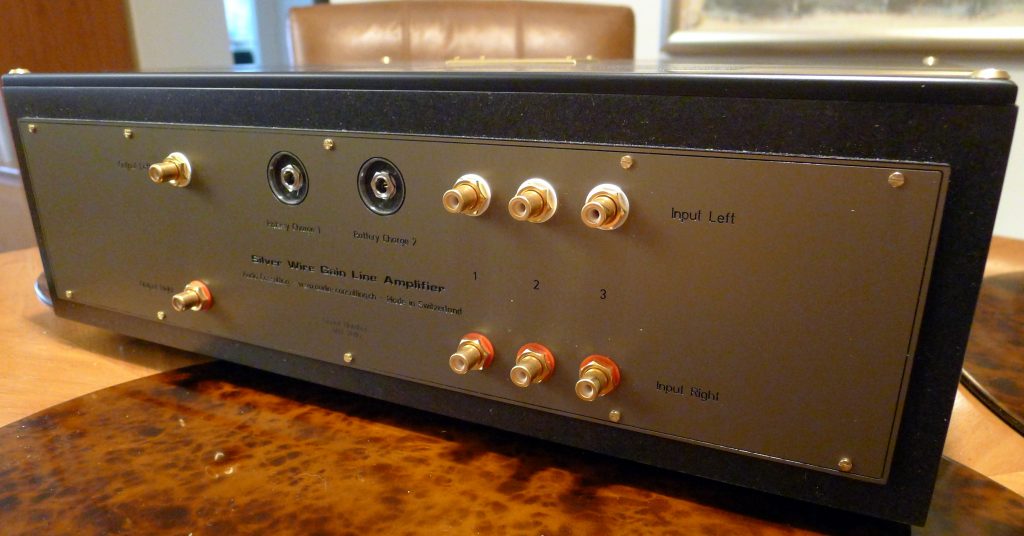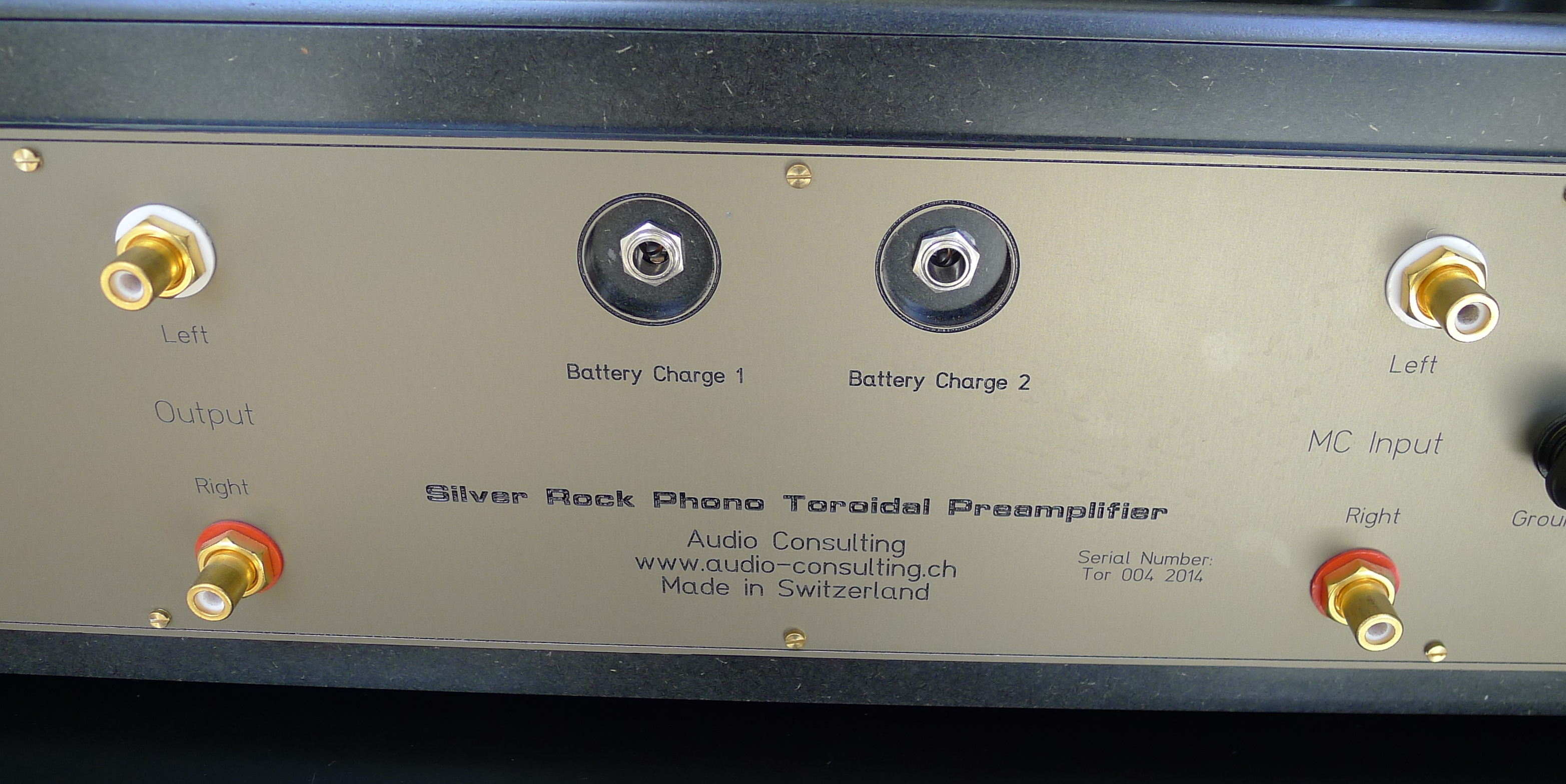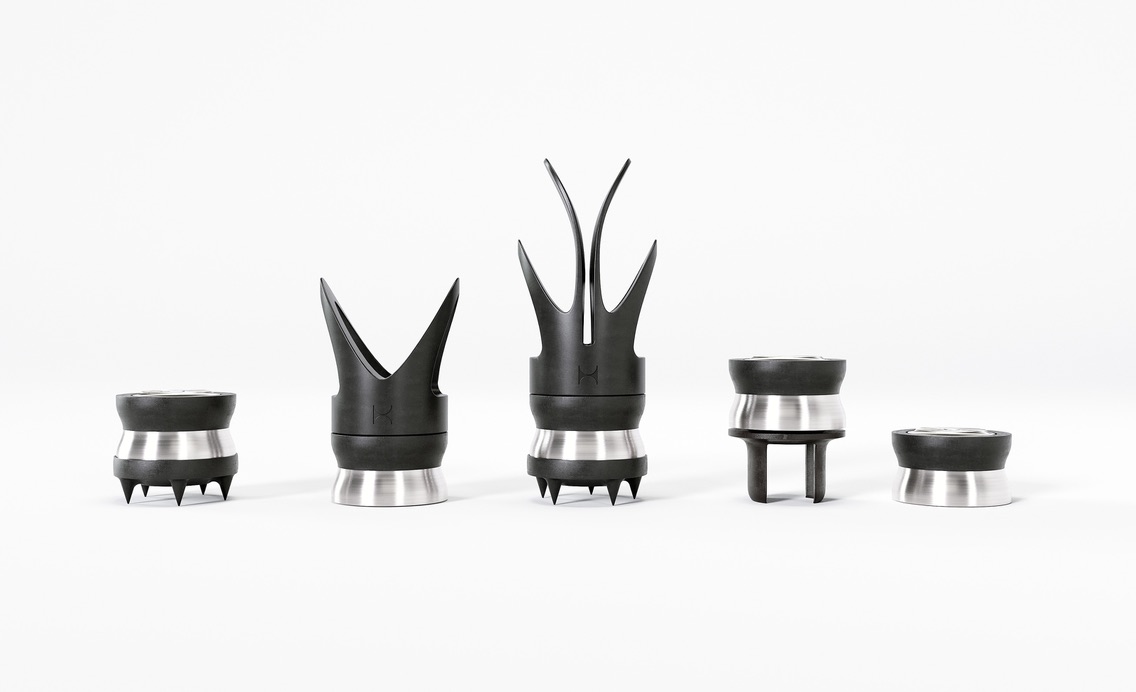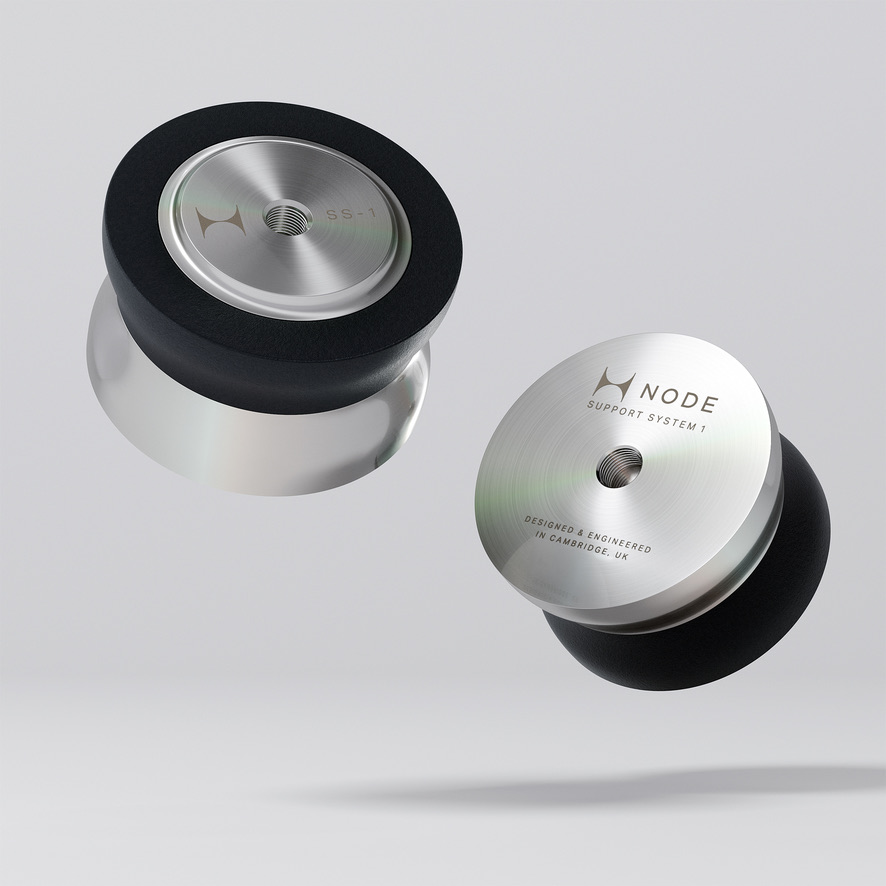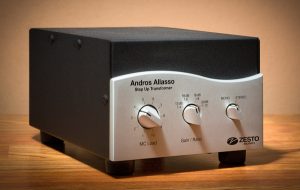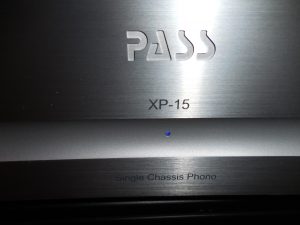The Ghosts in the Machine
"Remember when we used to talk about hearing the inner voices?" Lynn whispered. "How listening to the system was like looking at the score?"
I knew what she was talking about. "That was a long time ago."
LN: "Well, those inner voices are back…and with dimension." We were spinning Capriccio Espagnol, a Crystal Clear Records direct to disc LP (CCS-7003). "See, he missed it, too!"
MN: "Oh, you mean the oboist?" I was paying attention to the principal cellist.
LN: "Yeah. The oboe squawked on the high D after the trill."
It made her feel good to point out that such mishaps happen even in the Boston Pops Orchestra, not just to her at a recent performance of the volunteer orchestra where she plays principal oboe.
Hearing the inner voices is nothing new. You've probably read copy like this before; I've even written copy like this before. The difference today was how easy it was. The parts were dynamically fleet, dancing before us. All we had to do was sit back and watch them unfold.
The Panel's Comment
This was at our first sit-down with the SWGLA Line Preamp and the Silver Rock Phono Stage from Audio Consulting, a Swiss high-end boutique.
SWGLA Line Preamp
Variations of this observation would be uttered at nearly every session going forward. Each of us has things that push our buttons and, whatever they were, the AC duo was managing to trigger them.
"Usually as a crescendo builds the individual voices get drowned out and you can't decipher the parts. The AC duo is able to keep the view open as a crescendo gathers momentum."
"You can pick it apart and hear all the constituent parts—or you can take a step back and take it all in, in one coherent sweep."
"This is another record I thought I knew—so much for that!"
The AC duo stimulated every cliché in the book.
Dave has an astute set of ears. On first hearing analog through the AC duo (via my Kronos Sparta with the Air Tight Supreme MC cartridge), he took a moment to collect his thoughts, then spoke about the tactile quality of the midrange and the fleshiness of the treble—saturated, smooth, and of high purity, "They have a liquidity that's not quite tubey, not quite solid-state."
"Maybe it's a battery kind of liquidity," I suggested, half joking. There is such a thing, you know. Battery power tends to smooth out roughness and impart fullness. Both AC units are battery powered.
Silver Rock on Vibraplane ELpF platform
Avuncular Personality
On another occasion, we were wrapping up a session and panelist Sheldon dropped an observation from way out of left field. He described the AC as avuncular, as in resembling an uncle, especially one who is friendly, helpful, or good-humored. It implies generous, personable, and wealthy; one who comes bearing gifts and refrains from being critical.
On the other hand, he characterized my reference CH Precision gear as didactic, in the sense of educational or instructive, teaching; bringing insight of an academic nature. "The CH often startles you with how well it does things, but it does not have a welcoming sound like the AC."
I wonder where he pulled that one from.
An Ingratiating Voice
The AC's avuncular voice invites you in. You relax. Left brain functions recede and you soon forget about the audiophile report card, as the music takes precedence.
It happened with the Brahms 4th Symphony, with Eugen Jochum conducting the London Philharmonic (EMI SLS 5093). When it was over, Lynn was impressed and wanted to know, "Is that a notable recording?" The answer is no, it's not on anybody's list. It's just a very good conductor of the old-school on a label known for good engineering. But played back through the AC duo, it was engrossing as it hadn't been.
This happened often, which tells me the product is voiced with some ingratiating aspects. I set about taking inventory.
From an Audiophile Perspective
First, the lollipops from an audiophile perspective:
Spatial Presentation
Familiar recordings that had been cramped in the middle spread out laterally across the width, and the illusion of 3D space became vastly more convincing. While spatial parameters are stable and the large images are arrayed in correct perspective and proportion with each other, with their soft-focus borders they escape any hint of tightness or rigidity. Yet enough tension is maintained so it doesn't go slack. Musical flow is very credible.
Tonal Balance
The AC tone is sweet, warm, and quite full—borderline lush. It has a treble similar to the Lamm LL1.1 preamp I just reviewed, meaning you never hear it exposed and detached. You simply don't notice it. The midrange and bass are where the AC lives, especially the lower midrange.
On recordings with significant low frequency content, the double basses entered and started growling with such force we were left wondering, open mouthed: Where did it all come from? It's like another dimension on the bottom. Yes, it is a little out of proportion, but not enough to darken the palette or throw off the balance. Put it this way—I felt no urge to adjust it.
Actually, I'm coming to the conclusion that a little bulge in the lower mids is desirable, because whenever it is present listeners respond. We were all digging it.
The Shape of the Note
Sheldon ventured to describe the shape of the note. "The attack is most precise; the sustain is so fulsome; the decay is very natural. Actually, all three parts of the note—attack, sustain, decay—are equally excellent. Now, that's something you don't encounter every day."
Yup, that's right on the money. Very good components may get one part; to get all three right is remarkable. Each part got what it needed. I will add that the attack moves fast enough, but is not razor sharp. It has a sloping edge, and so no roughness.
From this description of the tone, timbre, and body—it sure sounds like tubes, doesn't it? Yes, to a degree, but where the AC diverges from that profile is its accuracy. The sweetness is doled out modestly; it doesn't get in the way of hearing differences in the source.
That Ineffable Something
Now, from a music lover's perspective.
Right from your initial exposure, the AC makes you do a double-take because it presents the kind of performance details and insights that conjure live sound. You can always identify live music regardless of the circumstances. There are certain ineffable (i.e. incapable of being expressed or described in words) clues which your brain recognizes, even if it is impossible to write them down.
Lynn says, "The AC doesn't sound digital. It doesn't sound analog. It's something else, like a melding of the best of both."
As luck would have it, my time with the AC duo overlapped with the arrival of a pair of luxury-class cartridges from Air Tight: the Supreme and the Opus. During these weeks we lounged nightly in analog bliss, leapfrogging from mountaintop to mountaintop. Without question, these were heady analog days at Nack Labs.
Audio Consulting's History
Audio Consulting maintains a low profile, but the cognoscenti know them for very high-end, ultra-purist designs of iconoclastic appearance, distinctive engineering—and high cost.
The two components under review come in similar, rather large moderately heavy chassis made of a lacquered, black MDF cosmetically reminiscent of Bakelite radios from the 1940's. Alternately, it reminds me of those expensive eyeglass frames mimicking the retro look popular today.
The Silver Wire Gain Line Amplifier
Imagine a line preamplifier using a silver wire transformer volume control achieving very low output impedance together with a gain of 10dB...
There are three very large wooden knobs on the front of the SWGLA: Input, On-Off, and Volume. That's it: no mute, mono, or balance. Being purist in design, these products eschew some of the common user-friendly features. Of course, there are no remote controls and everything is operated from the front panel.
My sample SWGLA had three sets of input jacks and one output, everything RCA. The Volume control is a stepped attenuator with large increments.
The Silver Rock Toroidal Phono
MC step up at the beginning, followed by an active device including inductive RIAA crossover, and finally an output transformer, which together reached a comfortable 70 dB of gain @ 1KHz.
The Silver Rock phono has a single one of those very large wooden knobs for On-Off. That's it. Again, no mute. Gain and load are set automatically, and RIAA is not adjustable. My sample had one input and one output, everything RCA.
Meteor Upgrades
As the name implies, Audio Consulting products are customizable to user specifications. The Silver Rock phono I had on hand incorporated a lot of the upgrades from the more expensive Meteor model. For example, an email from the importer explained:
In the Meteor series all toroidal magnetic parts are hand coiled using silk ribbons and organic bees wax as isolation materials. The resistors for the R-L time constants in the RIAA crossover network are made of silver.
Installation
I situated both AC units on Vibraplane ELpF active air isolation platforms. The phono cable was a Stage III Concepts Analord Master; Kubala•Sosna Elation! interconnects and power cords and TARA Labs The Muse speaker wires were used throughout the audition. As mentioned, a pair of Air Tight MC cartridges saw duty on my Kronos Sparta turntable: first the Supreme, followed by the Opus.
Battery Powered
Both units are solid-state and battery-powered, meaning you need a routine. At the beginning of a listening session, unplug the two chargers. Even though battery powered, the sound is best when the chargers are disconnected. When you are finished listening, plug the charger pins back in. A full battery charge lasts for days, obviating the need for frequent charging. (Just don't let the battery strength indicated by the numerical display on the front drop below 12.6.) The latest batteries in these units charge very fast: a half-hour on the charger is good for hours of playtime.
Silver Rock rear view with chargers on Vibraplane ELpF platform
I left the SWGLA and Silver Rock phono on all the time, but if you do power down after a session, give them a good hour to get back to optimum playback. I'd spin at least two LP sides to get the Silver Rock phono up to speed before sitting down for serious listening. (If you have the patience, it's even better after three LP sides.)
For more technical information, visit the website or consult your dealer.
Conclusion
Lynn and I had just returned from our 12th annual sojourn to the Ottawa International Chamber Music Festival in Canada. For two weeks we listened to acoustic instruments in a century-old church noted for its excellent acoustics. Amplification is largely eschewed. Imagine two weeks of such excellent ear tuning! Billed as the largest of its kind in the world, the Chamberfest is like summer camp for grey beards.
Inevitably, a deep malaise sets in when I return and fire up the system. Then I embark on a path of creative destruction, ripping out sundry room treatments and audio tweaks, all in a desperate attempt to recreate something akin to what we heard up north. Except this year that didn't happen.
Infrequently, gear comes along that asks you to put aside the analytical side of your brain and just listen. The components from Audio Consulting do that. When the analytical retreats, music appreciation comes forward. The new SWGLA Preamp and Silver Rock Toroidal Phono Amplifier do things that you don't hear from other components. They reveal the kind of performance details and insights that conjure live sound.
This is not to short change how well they perform on the audiophile report card, with excellent grades across the board. But the Audio Consulting gear will obviously have greatest appeal to those who treasure musicality.
The AC duo stimulated a pleasure factor, and all who heard it agreed: reproduced music should have that more often. This is something I don't get even from the mighty CH Precision P1 Phono stage and L1 Preamp.
If the shoe fits (and you can afford it), there's no need to look further. Your search would likely be futile.
SWGLA Preamplifier
Retail: $15,975 (Silver Wire Gain Line Amplifier)
Silver Rock Toroidal Phono Amplifier
Retail: $44,750 with custom Meteor Step Up internal option
Audio Consulting
Importer information
Audioarts




